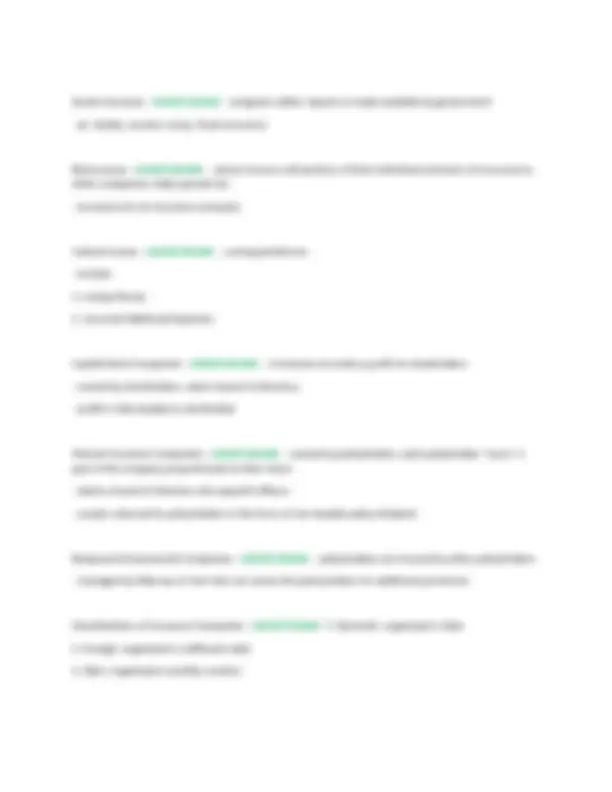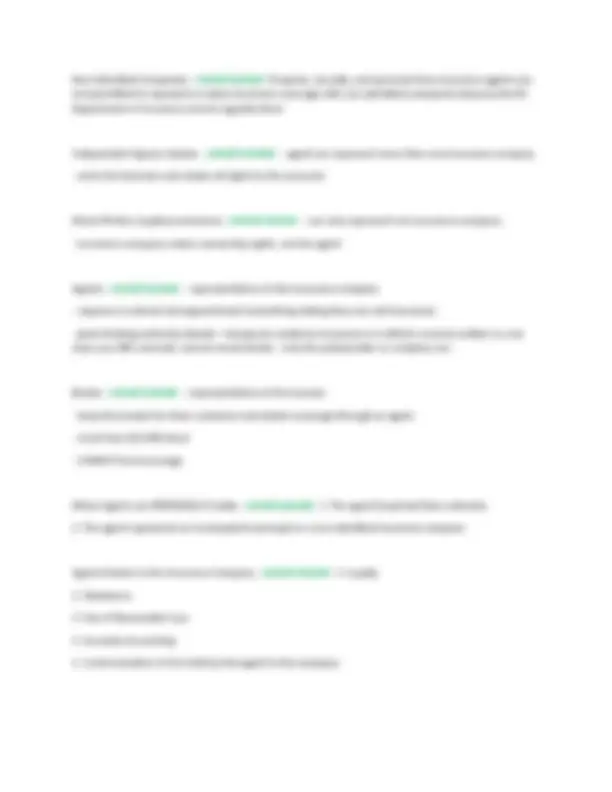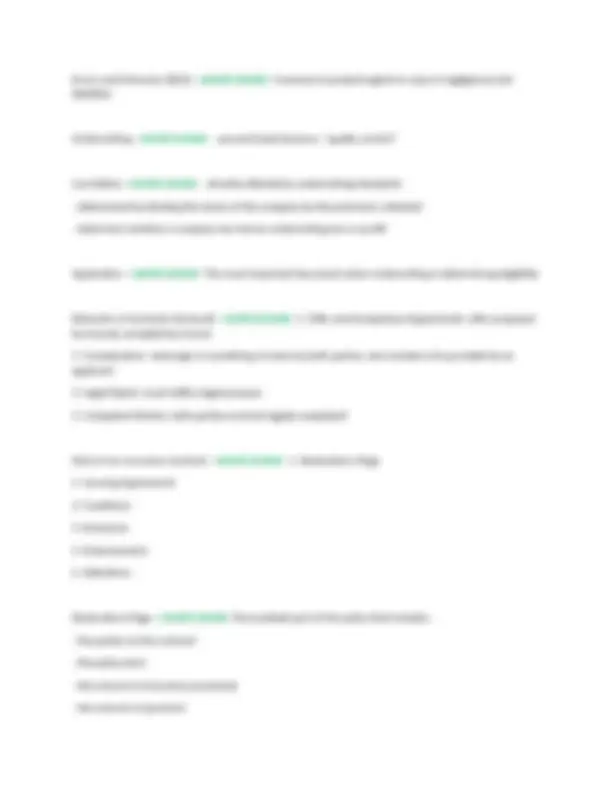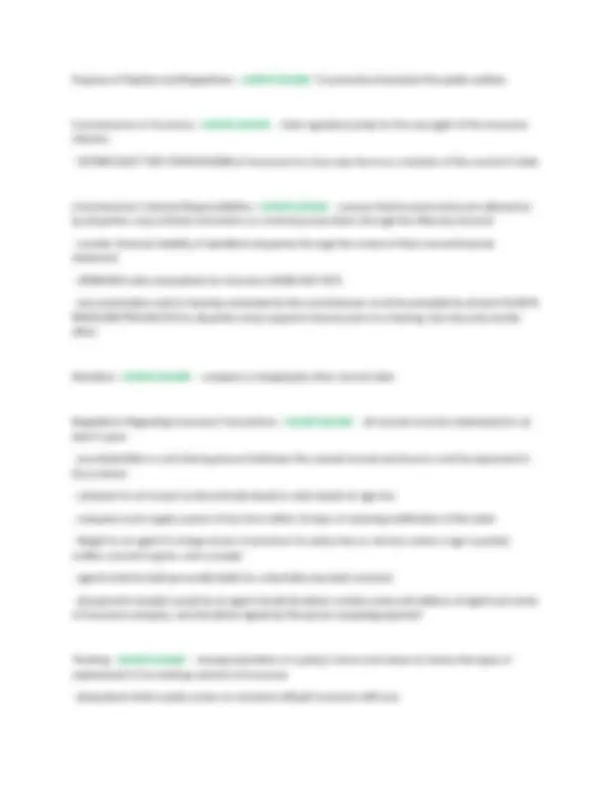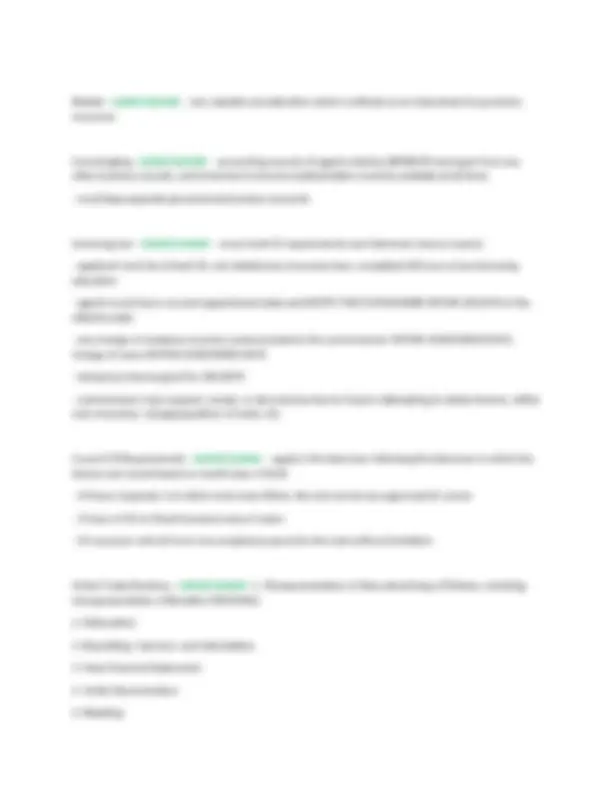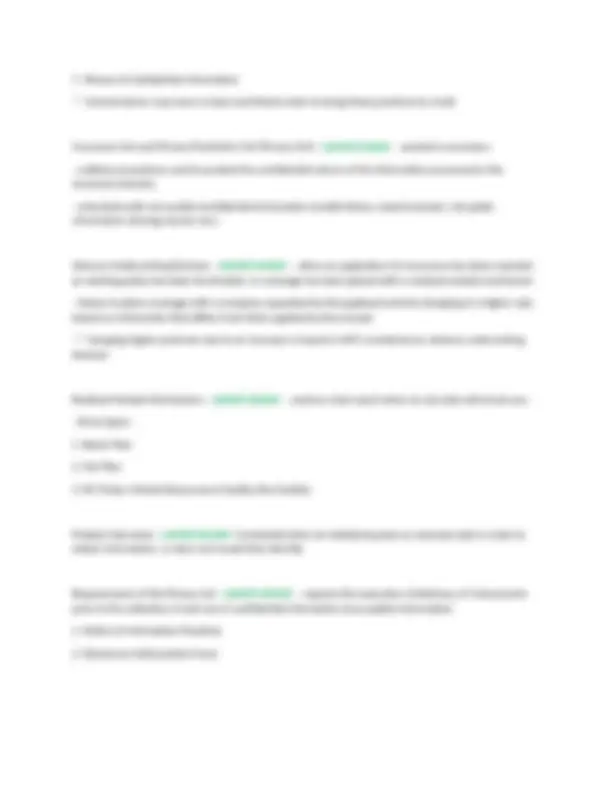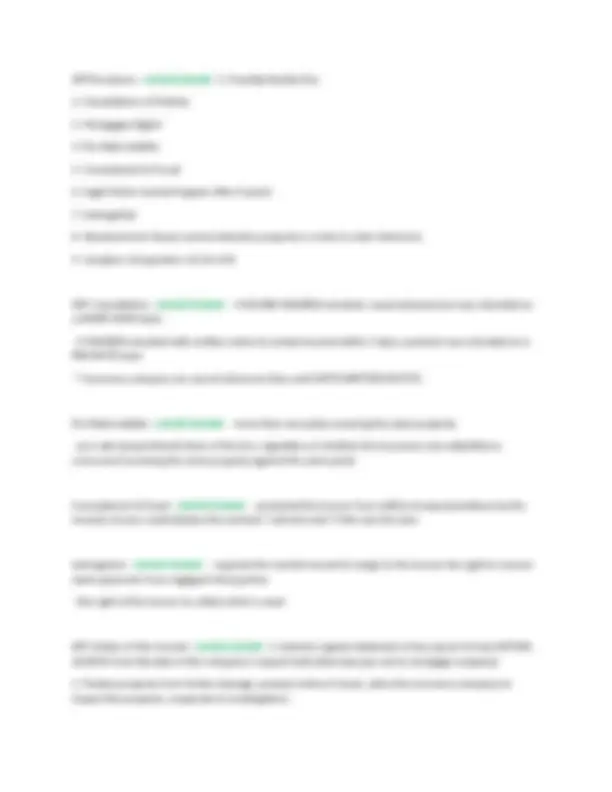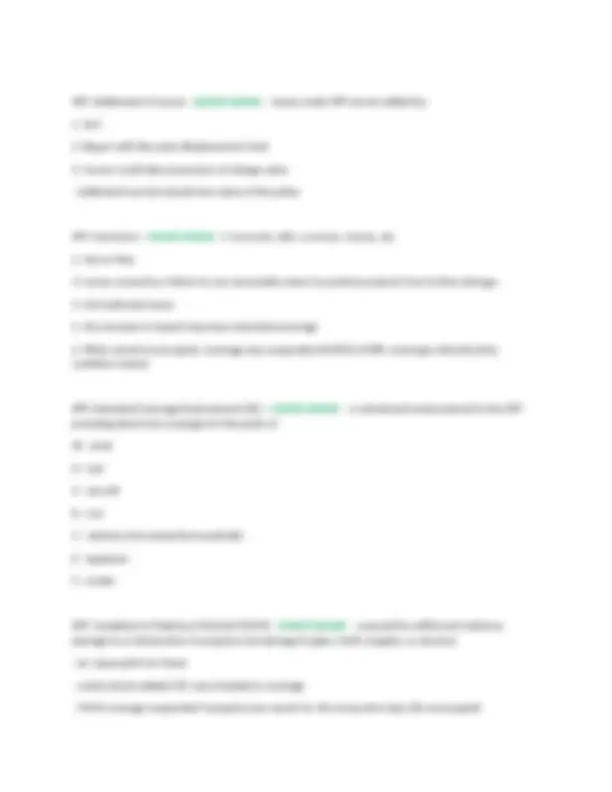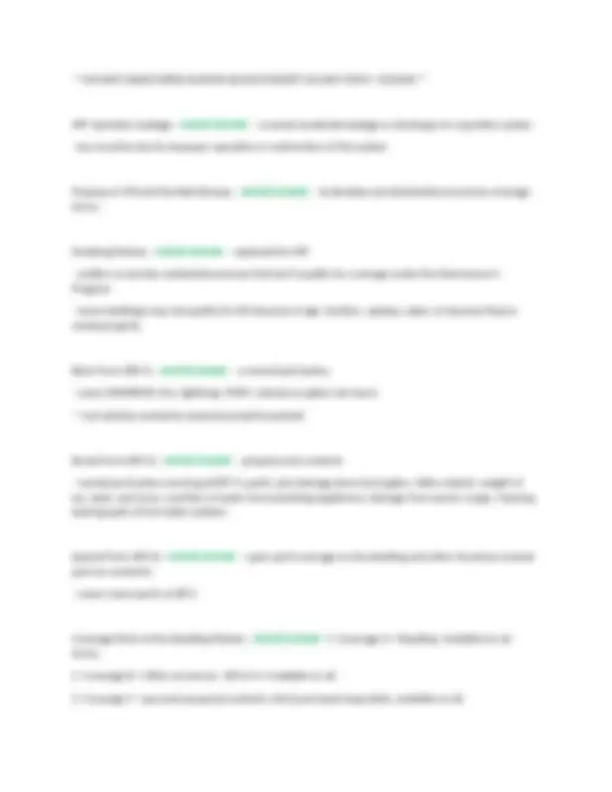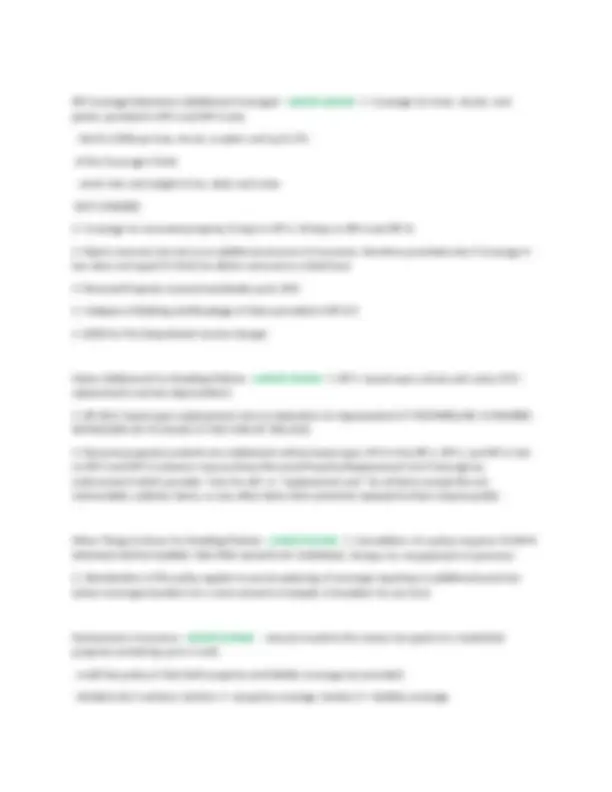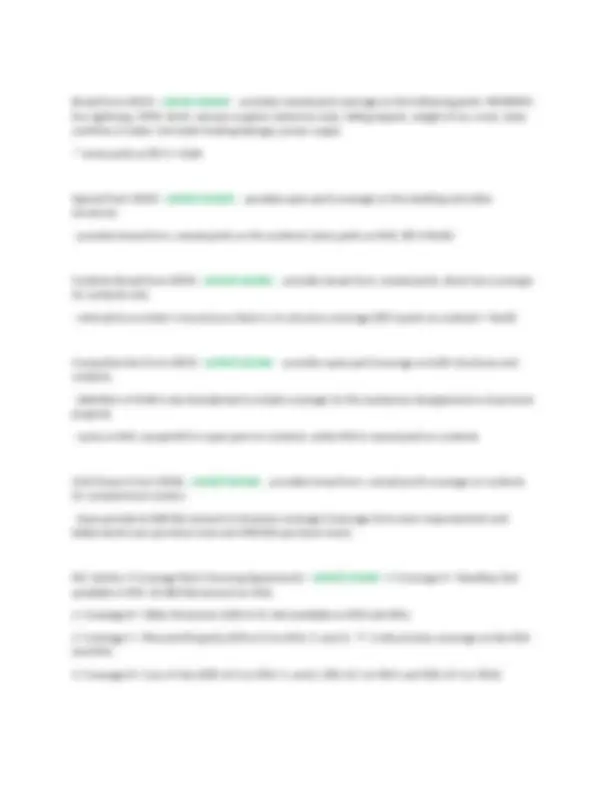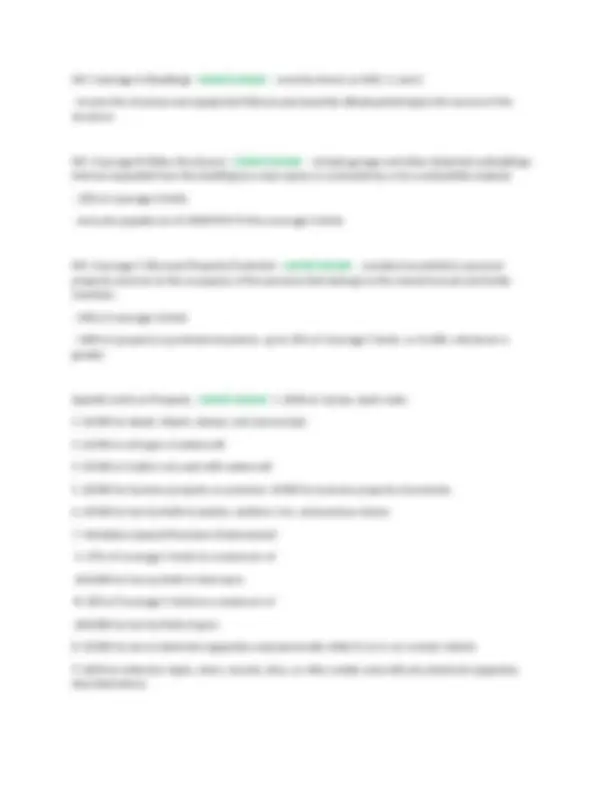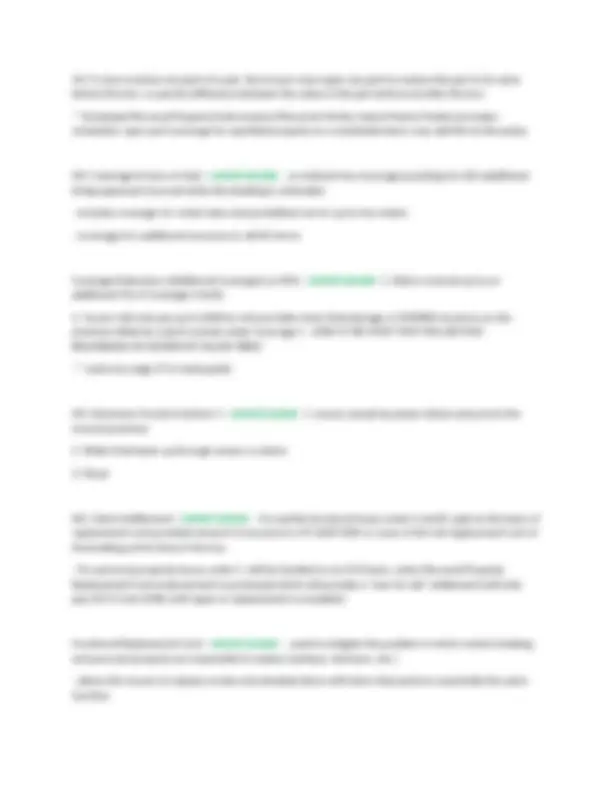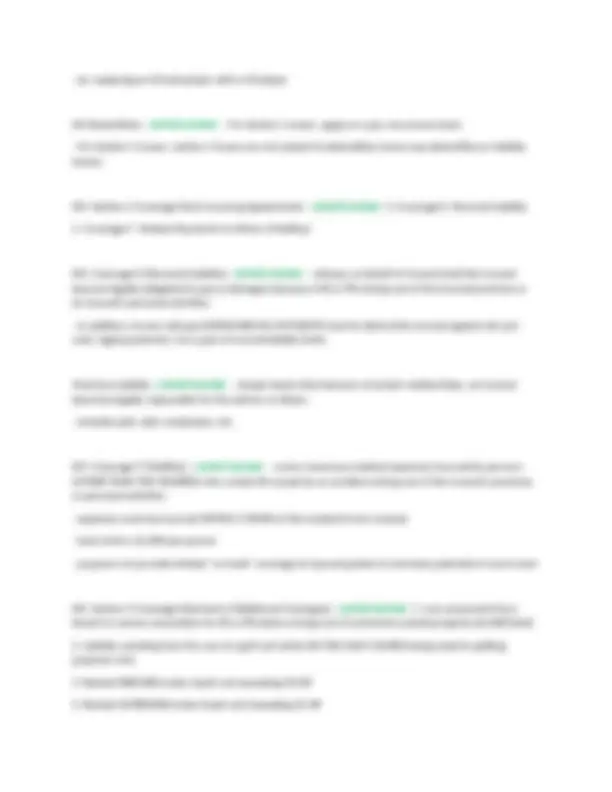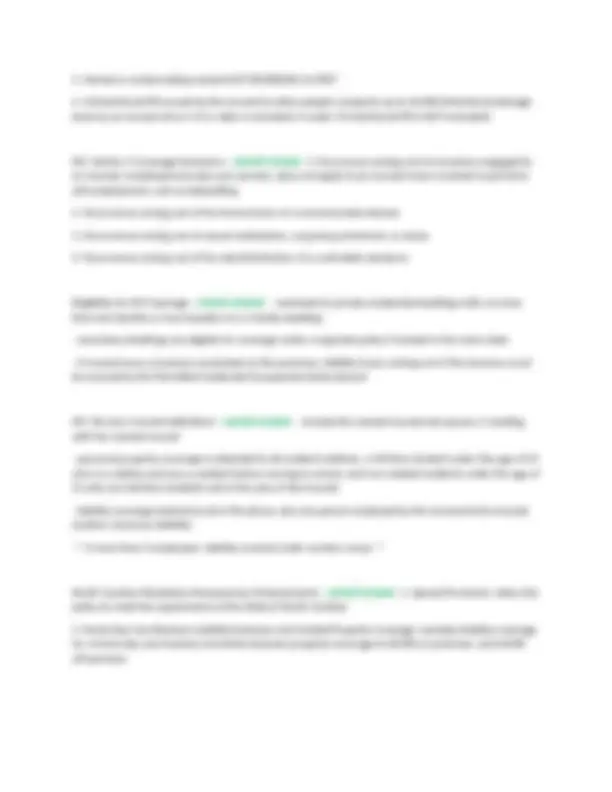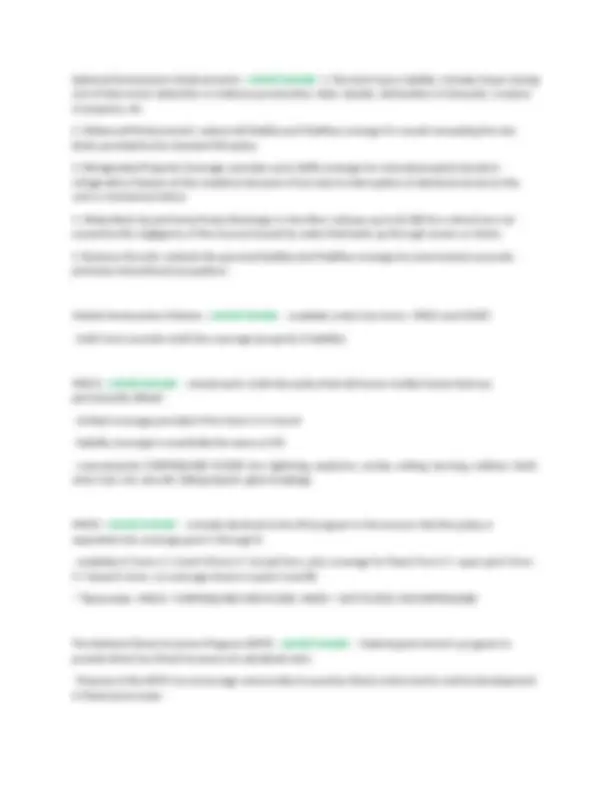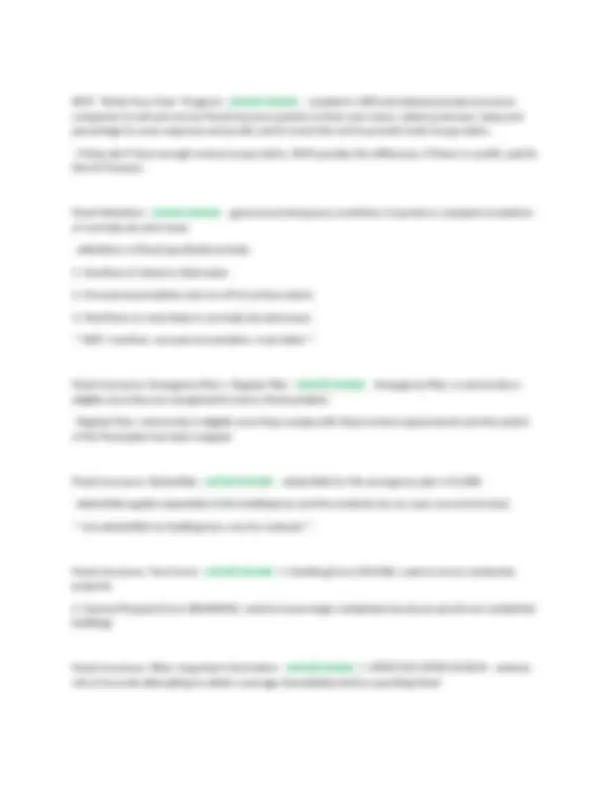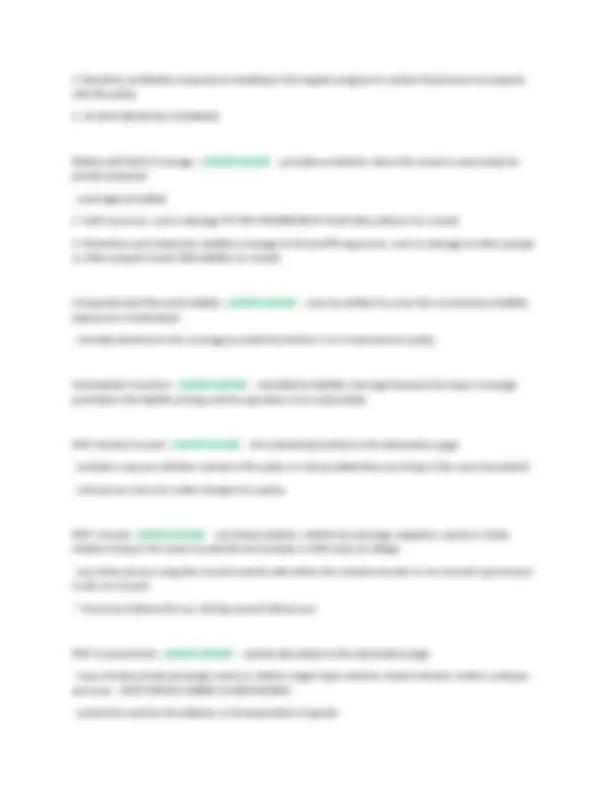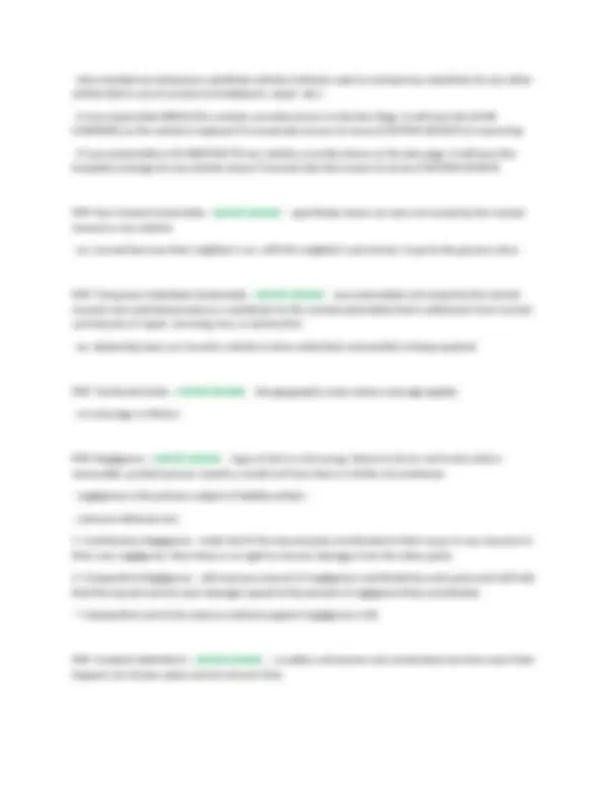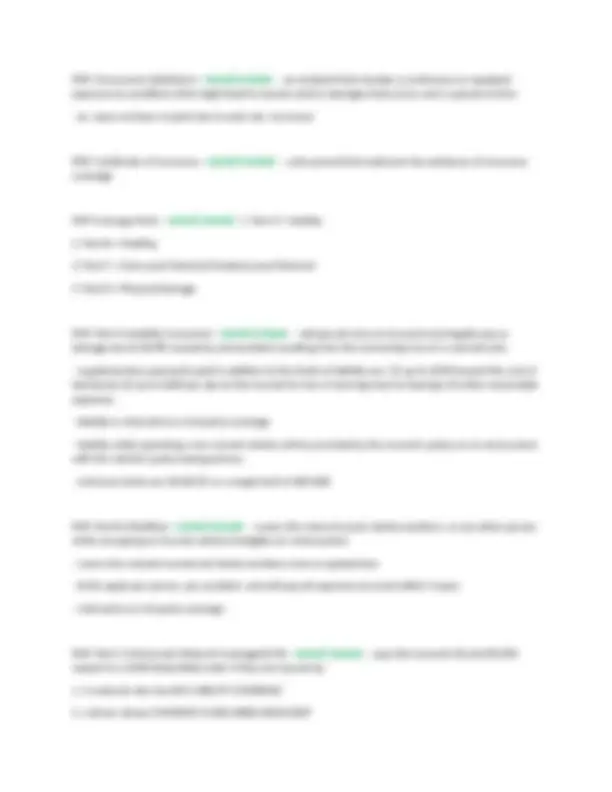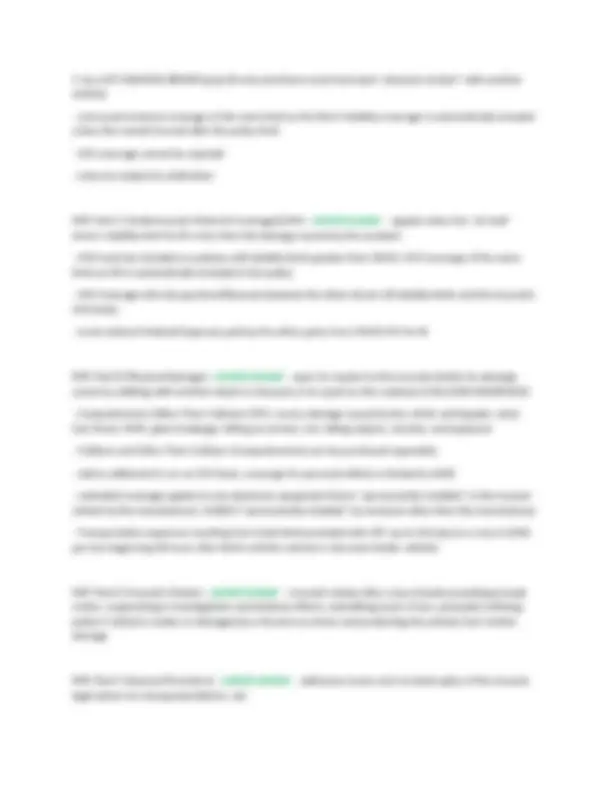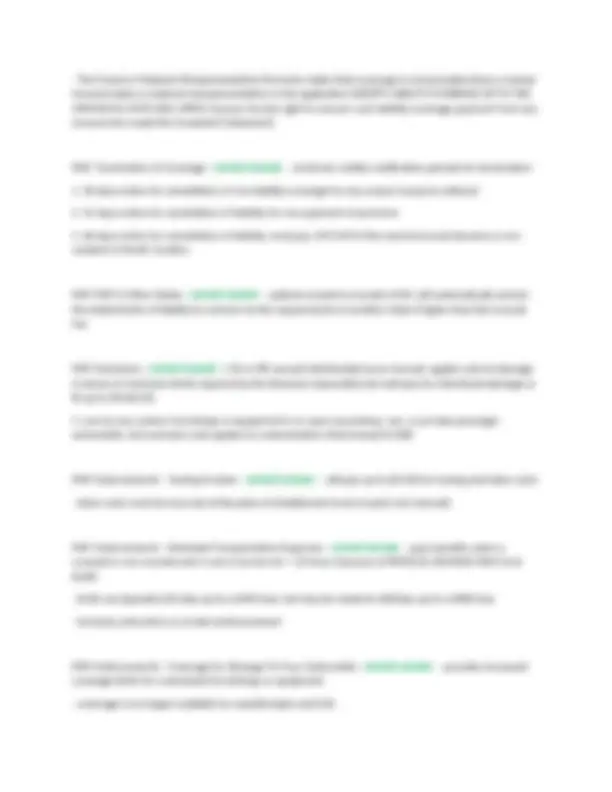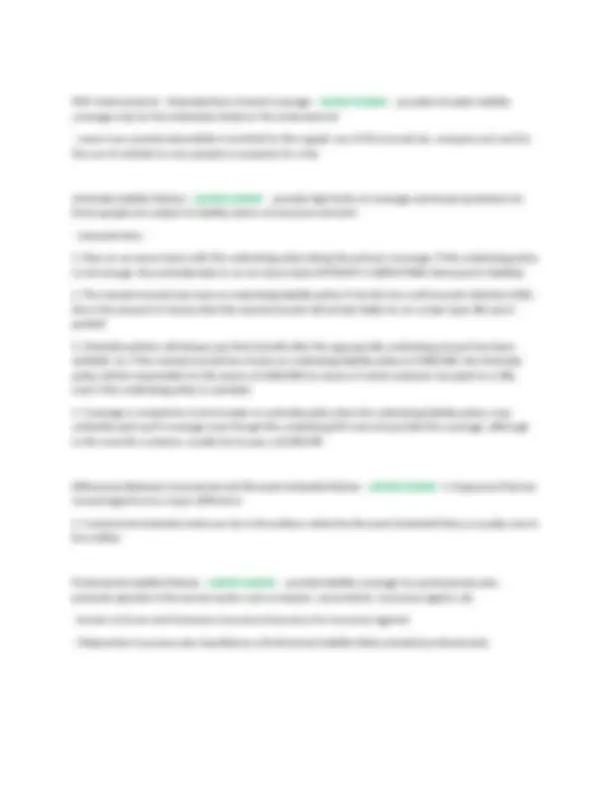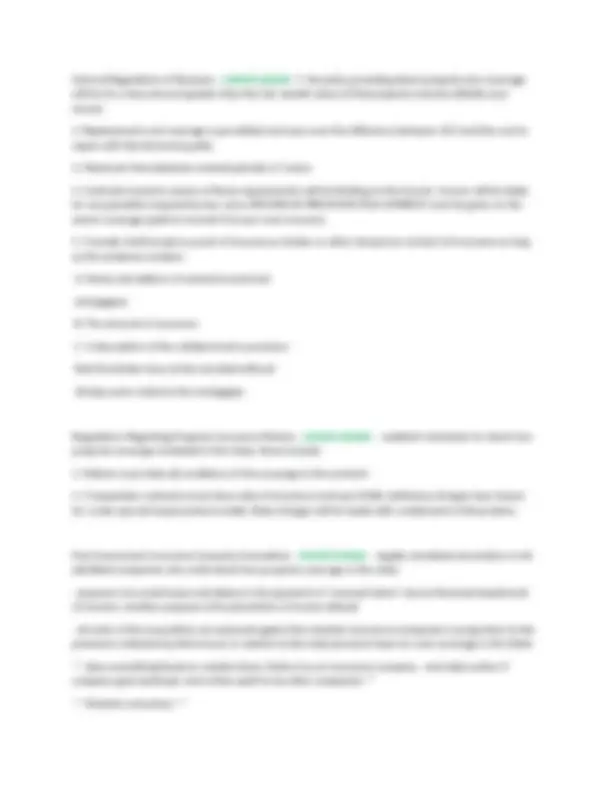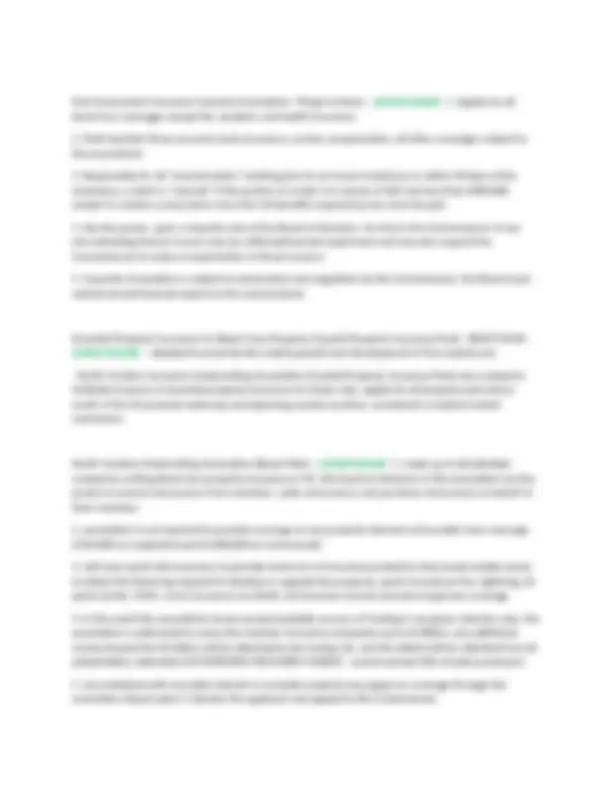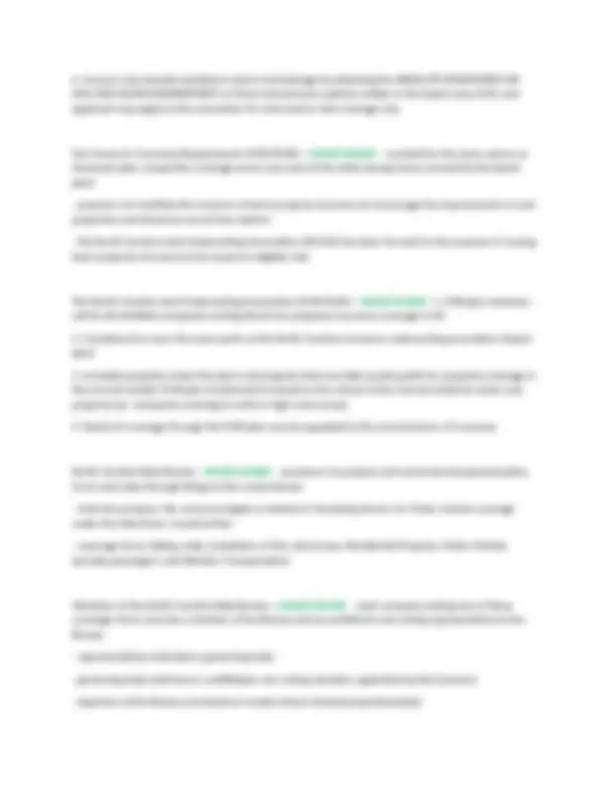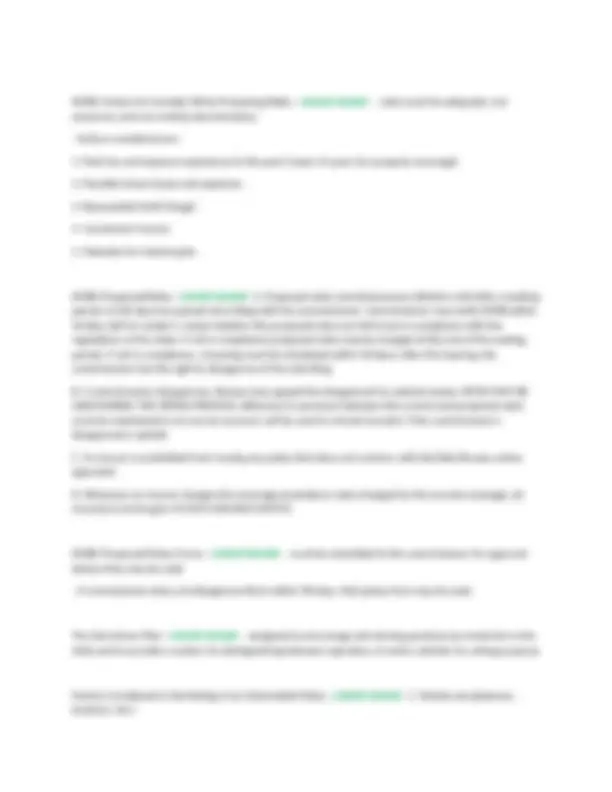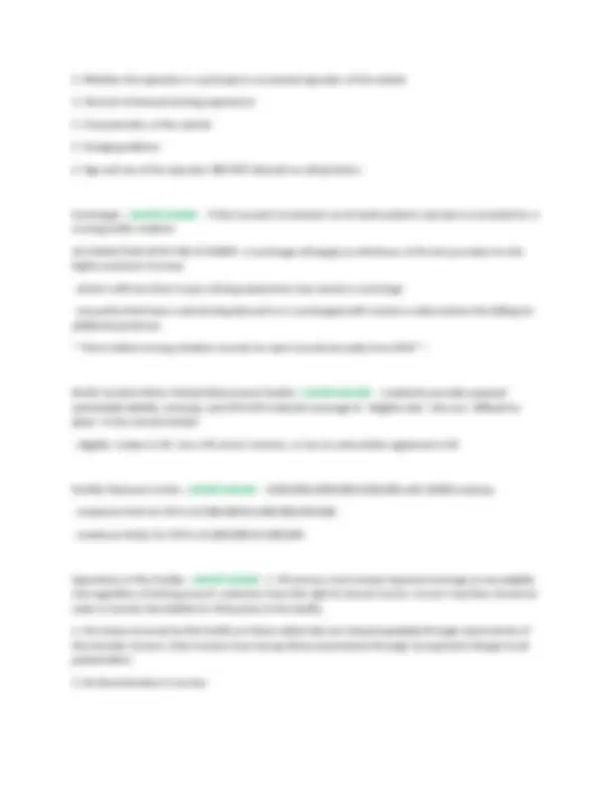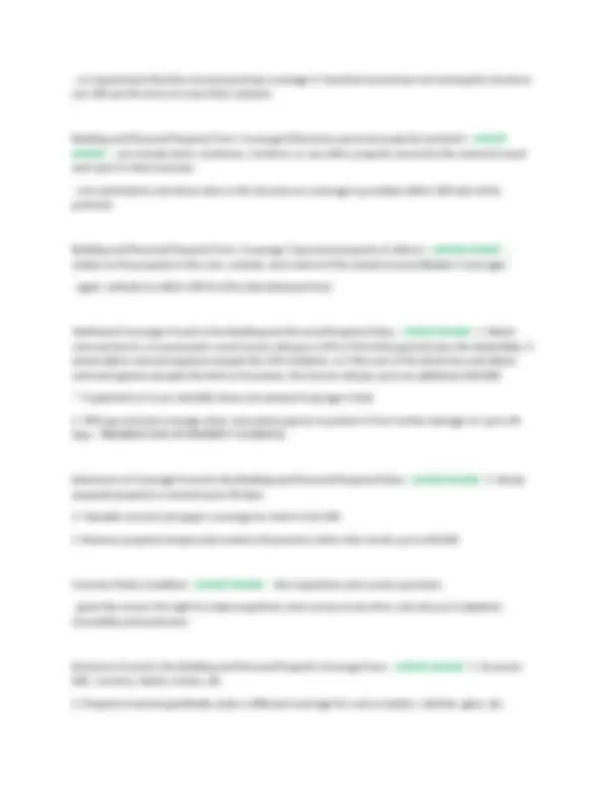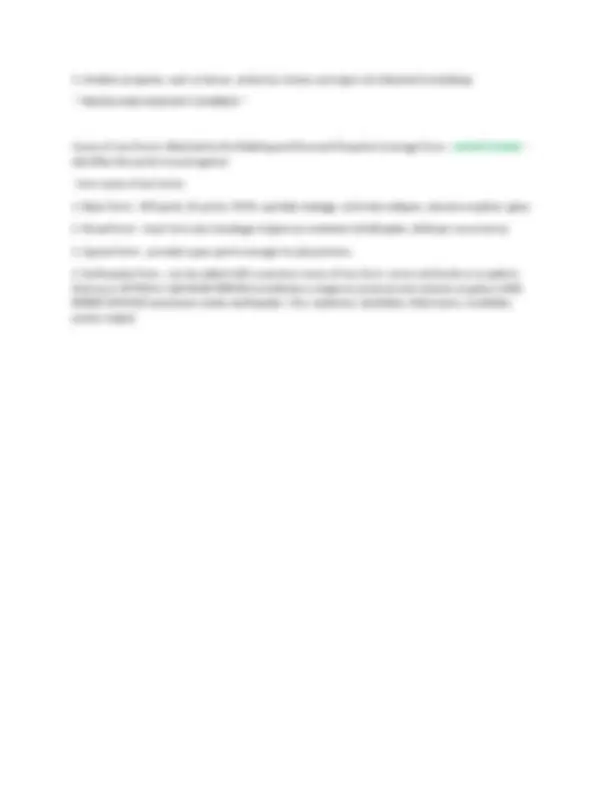Download NC Property and Casualty State Exam Graded A+. and more Exams Science education in PDF only on Docsity!
NC Property and Casualty State Exam
Graded A+.
Insurance - correct answer - a plan of spreading the risk of possible loss over a large number of people (Law of Large Numbers)
- protects against the risk (uncertainty) of when a financial loss might occur Speculative Risk - correct answer - when there is a chance of gain as well as a chance of loss (ex: buying a stock, gambling)
- insurance IS NOT intended to protect against this Pure Risk - correct answer - when there is a chance of loss only
- not all pure risks are insurable Insurable Risk - correct answer - a risk the insurance company is willing to accept
- characteristics of an insurable risk
- Low probability of a loss occurring
- Less than catastrophic results
- The loss must be measurable
- The loss must be significant
- The loss must be accidental and unintended Law of Large Numbers - correct answer - makes it possible to predict future losses based upon prior experience
- law states that as a large # of events are included, the difference between actual and expected results become smaller Spread of Risk - correct answer - involves spreading the company's policies over a broad geographical area in order to avoid large losses in the event of a catastrophic event
Adverse Selection - correct answer - occurs when insureds with a high risk of loss attempt to purchase insurance and are successful in doing so
- insurers attempt to PREVENT THIS (bad risk)
- prevented by:
- refusal to write
- rating up
- insurability standards *** deductibles do not prevent this Retention - correct answer - when liability for a loss is maintained by an individual by NOT PURCHASING INSURANCE
- deductible is an example of retention Transfer - correct answer To shift the responsibility for a loss to an insurance company through the purchase of insurance Control/Reduction - correct answer - an attempt to prevent a loss or to reduce the amount of the loss
- ex: installation of a sprinkler system to reduce the amount of loss Perils - correct answer Actual cause of a loss such as fire, theft, wind, hail, etc. Hazards - correct answer - increase in the probability of a peril occurring
- ex: bald tires on a car, faulty wires, damaged steps Principle of Indemnity - correct answer - the fundamental idea that the purpose of insurance is to restore the insured to the original financial position that was enjoyed before a loss, BUT WITHOUT GAIN Private/Voluntary Insurance - correct answer - neither required nor made available by the government, but does not meet recognized needs
- ex: collision insurance in a PAP
Non-Admitted Companies - correct answer Property, casualty, and personal lines insurance agents are not permitted to represent or place insurance coverage with non-admitted companies because the NC Department of Insurance cannot regulate them Independent Agency System - correct answer - agent can represent more than one insurance company
- owns the business and retains all rights to the accounts Direct Writers (captive/exclusive) - correct answer - can only represent one insurance company
- insurance company retains ownership rights, not the agent Agents - correct answer - representatives of the insurance company
- requires a contract and appointment (something stating they can sell insurance)
- given binding authority (binder = temporary evidence insurance is in effect); must be written or oral (says you ARE covered); cannot cancel binder - only the policyholder or company can Broker - correct answer - representatives of the insured
- shop the market for their customers and obtain coverage through an agent
- must have $15,000 bond
- CANNOT bind coverage When Agents are PERSONALLY Liable - correct answer 1. The agent breached their authority
- The agent represents an incompetent principal or a non-admitted insurance company Agents Duties to the Insurance Company - correct answer 1. Loyalty
- Obedience
- Use of Reasonable Care
- Accurate Accounting
- Communication of info held by the agent to the company
Errors and Omission (E&O) - correct answer Insurance to protect agents in case of negligence/civil liabilities Underwriting - correct answer - prevents bad business; "quality control" Loss Ratios - correct answer - directly affected by underwriting standards
- determined by dividing the losses of the company by the premiums collected
- determine whether a company has had an underwriting loss or profit Application - correct answer The most important document when underwriting is determining eligibility Elements of Contracts (General) - correct answer 1. Offer and Acceptance (Agreement): offer proposed by insured, accepted by insurer
- Consideration: exchange of something of value by both parties; also includes info provided by an applicant
- Legal Object: must fulfill a legal purpose
- Competent Parties: both parties must be legally competent Parts of an Insurance Contract - correct answer 1. Declarations Page
- Insuring Agreements
- Conditions
- Exclusions
- Endorsements
- Definitions Declarations Page - correct answer Personalized part of the policy that includes:
- the parties to the contract
- the policy term
- the amount of insurance purchased
- the amount of premium
- the insurer cannot enforce payment of premiums in court, but the insured can enforce the contract if all conditions of the contract have been satisfied
- only the insurance company makes a legally enforceable promise Adhesion - correct answer - contract is purchased as it is worded and the insured is "stuck" with that wording
- courts will interpret any ambiguity in favor of the insured (the party who did not write the contract) Waiver - correct answer - the voluntary abandonment of a right or advantage placed in writing Estoppel - correct answer - legal consequence of a waiver
- one party may be stopped from a right granted to them in the contract because of previous words/actions Representations - correct answer - statements in the application that are made with UTMOST GOOD FAITH, but not guaranteed to be accurate Warranties - correct answer Statements with guaranteed accuracy Misrepresentation - correct answer - a lie regarding material information
- two types: material and nonmaterial
- Material - can declare the contract null and void; would have never written the policy having known this information
- Nonmaterial - no effect on the contract (lie about age, etc.) Concealment - correct answer Withholding of a material fact; not an overt lie, but a failure to state the entire truth Department of Insurance - correct answer Empowered to issue regulations necessary to carry out the regulation of the conduct of the insurance business
Purpose of Statutes and Regulations - correct answer To promote and protect the public welfare Commissioner of Insurance - correct answer - chief regulatory body for the oversight of the insurance industry
- VOTERS ELECT THE COMMISIONER of insurance to a four-year term as a member of the council of state Commissioner's General Responsibilities - correct answer - assures that insurance laws are adhered to by all parties; may institute civil actions or criminal prosecutions through the Attorney General
- monitor financial stability of admitted companies through the review of their annual financial statement
- APPROVES rates and policies for insurance (DOES NOT SET)
- any examination and/or hearing conducted by the commissioner must be preceded by at least 10 DAYS PRIOR WRITTEN NOTICE to all parties (may suspend a license prior to a hearing, but may only revoke after) Deviation - correct answer - company is charging less than normal rates Regulations Regarding Insurance Transactions - correct answer - all records must be maintained for at least 5 years
- any deductible or cost-sharing amount between the named insured and insurer must be expressed in the contract
- unlawful for an insurer to discriminate based in rates based on age/sex
- company must supply a proof of loss form within 15 days of receiving notification of the claim
- illegal for an agent to charge excess of premium for policy fees or services unless a sign is posted, written consent is given, and a receipt
- agents shall be held personally liable for unlawfully executed contracts
- all payment receipts issued by an agent should be dated, contain name and address of agent and name of insurance company, and should be signed by the person accepting payment Twisting - correct answer - misrepresentation of a policy's terms and values to induce the lapse of replacement of an existing contract of insurance
- lying about what a policy covers so someone will get insurance with you
- Misuse of Confidential Information ** Commissioner may issue a Cease and Desist order to bring these practices to a halt Insurance Info and Privacy Protection Act (Privacy Act) - correct answer - protects consumers
- outlines procedures used to protect the confidential nature of the information processed in the insurance industry
- only deals with non-public/confidential information (credit history, need-to-know), not public information (driving record, etc.) Adverse Underwriting Decision - correct answer - when an application for insurance has been rejected, an existing policy has been terminated, or coverage has been placed with a residual market mechanism
- failure to place coverage with a company requested by the applicant and the charging of a higher rate based on information that differs from that supplied by the insured ***charging higher premium due to an increase in hazard is NOT considered an adverse underwriting decision Residual Market Mechanisms - correct answer - used as a last resort when no one else will insure you
- three types:
- Beach Plan
- Fair Plan
- NC Motor Vehicle Reinsurance Facility (the Facility) Pretext Interviews - correct answer Conducted when an individual poses as someone else in order to obtain information, or does not reveal their identity Requirements of the Privacy Act - correct answer - requires the execution of/delivery of 2 documents prior to the collection of and use of confidential information (non-public) information
- Notice of Information Practices
- Disclosure Authorization Form
Notice of Information Practices - correct answer - summarizes the applicant's rights under the act including the right to know what information was gathered and from whom; also, the ability to dispute inaccurate information
- shall be provided to the applicant NO LATER than at the time of the delivery of the policy when personal information is being collected Disclosure Authorization Form - correct answer - grants public permission for the company to collect non-public information
- effective for 12 months Privacy Act: When Adverse Underwriting Decision Has Been Made - correct answer - responsibilities of agents and companies when an adverse underwriting decision has been made:
- Company must provide reason for adverse underwriting decision per the applicants written request; REQUEST MUST BE MADE WITHIN 90 DAYS, company has 21 days to respond
- Applicant has the right to dispute any information felt to be inaccurate that prompted the decision, and company must respond to disputed info WITHIN 30 BUSINESS DAYS
- Insurer must specify questions designed to obtain information solely for marketing purposes
- No adverse underwriting decision may be based off of a previous one; can only base off facts given at the time of application Powers of the Commissioner - correct answer - may investigate alleged violations of the Insurance Information & Privacy Protection Act and hold a hearing after at least 10 DAYS PRIOR WRITTEN NOTICE
- may subpoena companies, agents, and insurance support organizations
- allows applicant to be heard in the hearing and be represented by legal counsel Commonly Violated Statutes - correct answer - three things that could lead to the loss of the ability to market insurance in NC
- Embezzlement
- Insurance Fraud
- Placing insurance with non-admitted insurance company Types of Losses - correct answer 1. Direct Loss: actual monetary loss caused by the physical damage of tangible property (ALWAYS pay a deductible on a direct loss)
SFP Provisions - correct answer 1. Friendly/Hostile Fire
- Cancellations of Policies
- Mortgagee Rights
- Pro-Rata Liability
- Concealment & Fraud
- Legal Action (cannot happen after 3 years)
- Subrogation
- Abandonment Clause (cannot abandon property in order to claim total loss)
- Inception & Expiration (12:01 AM) SFP: Cancellation - correct answer - if NAMED INSURED canceled, unearned premium was refunded on a SHORT-RATE basis
- if INSURER canceled with written notice to named insured within 5 days, premium was refunded on a PRO-RATE basis **insurance company can cancel whenever they want WITH WRITTEN NOTICE Pro-Rata Liability - correct answer - more than one policy covering the same property
- pro-rate (proportional) share of the loss, regardless of whether the insurance was collectible or concurrent (covering the same property against the same peril) Concealment & Fraud - correct answer - protected the insurer from willful misrepresentations by the insured; insurer could declare the contract "null and void" if this was the case Subrogation - correct answer - required the named insured to assign to the insurer the right to recover claim payments from negligent third parties
- the right of the insurer to collect what is owed SFP: Duties of the Insured - correct answer 1. Submit a signed statement of loss (proof of loss) WITHIN 60 DAYS from the date of the company's request (will otherwise pay out to mortgage company)
- Protect property from further damage, prompt notice of losses, allow the insurance company to inspect the property, cooperate in investigations
SFP: Settlement of Losses - correct answer - losses under SFP can be settled by:
- ACV
- Repair with like value (Replacement Cost)
- Insurer could take possession of salvage value
- settlement cannot exceed face value of the policy SFP: Exclusions - correct answer 1. Accounts, bills, currency, money, etc.
- Acts of War
- Losses caused by a failure to use reasonable means to protect property from further damage
- Civil authority losses
- Any increase in hazard may have restricted coverage
- When vacant/unoccupied, coverage was suspended 60 DAYS LATER; coverage restored when condition ceased SFP: Extended Coverage Endorsement (EC) - correct answer - a named peril endorsement to the SFP providing direct loss coverage for the perils of: W - wind H - hail A - aircraft R - riot V - vehicles (not owned by household) E - explosion S - smoke SFP: Vandalism & Malicious Mischief (VMM) - correct answer - covered the willful and malicious damage to or destruction of property (not damage to glass, theft, burglary, or larceny)
- ex: spray paint on house
- could only be added if EC was included in coverage
- VMM coverage suspended if property was vacant for 30 consecutive days (60 unoccupied)
- Coverage D = Fair Rental Value. 10% of A. Available on all.
- Coverage E = additional living expenses. 10% of A. Available on DP-2 & DP-3. Added by endorsement on DP-1. **D and E are indirect loss coverages DP: Coverage A (Dwelling) - correct answer - provides protection for the structure and equipment/fixtures that are PERMANENTLY AFFIXED pertaining to the service of the building, such as central AC on a concrete pad next to the dwelling
- includes TV aerials, awning, and outdoor equipment, although loss by wind, hail, or the weight of ice, sleet, or snow will be excluded; building materials also covered unless loss is caused by theft
- DP-2 and DP-3 cover freezing, but freezing losses will not be covered unless the insured has used reasonable care to maintain heat or shut off the water supply DP: Coverage B (Other Structures) - correct answer - garages or other detached outbuildings that are separated from the dwelling by a clear space, or are connected by non-combustible material such as a fence, utility line, sidewalk, etc.
- 10% of A automatically extended for other structures
- reduces coverage A limit by the amount paid for the same loss in DP-1 ONLY
- on DP-2 AND DP-3, coverage B is considered to be ADDITIONAL INSURANCE and does not reduce coverage A (dwelling) DP: Coverage C (Personal Property/Contents) - correct answer - named insured purchases an amount of coverage C appropriate to their loss exposure that is separate from coverage on the dwelling structure
- covers property of named insured and family members and property of other that is in the care of the named insured
- must be on premises
- pets, aircrafts, and vehicles are NOT covered; lawnmowers, rowboats, and canoes ARE DP: Coverage D (Fair Rental Value) - correct answer - indirect loss of coverage for loss of rental income and payment of ongoing expenses (i.e. certain necessary utilities) when a rental dwelling is untenable
- 10% of A automatically extended
- in DP-1, may not exceed 1/12th of the 10% of Coverage A for each month the structure is untenable (DP-2/3 get full 10% at once)
- payable even if dwelling is not rented at the time of loss DP: Coverage E (Additional Living Expenses - ALE) - correct answer - provided in DP-2 and DP-3, and can buy more than 10% of A if needed; added by endorsement on DP-
- payment is in the same manner as coverage D (1/12th of 10% of A for DP-1), but designed for when dwelling is occupied by named insured instead of when it's rental property
- allows the family/named insured to maintain a normal standard of living Other Coverage Features of DP - correct answer - date of initial property damage obligates the insurer, so payments under D&E are not limited by the policy expiration date
- if civil authority prohibits use of insured property because of damage to a neighboring location, payments are limited to a maximum period of two weeks (civil authority = prohibited use coverage) DP: Theft Coverages (Endorsement) - correct answer 1. Broad Theft Coverage
- for owner-occupied dwellings
- ON AND OFF premises theft
- Limited Theft Coverage
- non-owner occupied dwellings
- only ON premises theft ** available by endorsement DP: Personal Liability - correct answer - can be added by endorsement for OWNER OCCUPIED PROPERTY ONLY
- minimum limit of liability is $100,000 per occurrence and $1,000 per person med pay coverage to others Eligibility for Dwelling Program - correct answer - all dwellings containing no more than 4 apartments or families and dwellings containing five or fewer roomers or boarders
- certain incidental businesses permitted if they are operated by an insured and provide SERVICE, NOT SALES (on premises) (ex: beauty parlor, piano lessons, etc.) **deductibles DO NOT APPLY to coverage D or E because they are Indirect Losses
Broad Form (HO2) - correct answer - provides named peril coverage on the following perils: WHARVES, fire, lightning, VMM, theft, volcanic eruption (airborne only), falling objects, weight of ice, snow, sleet, overflow of water, hot water heating damage, power surges **same perils as DP-2 + theft Special Form (HO3) - correct answer - provides open peril coverage on the dwelling and other structures
- provides broad form, named perils on the contents (same perils as HO2, DP-3+theft) Contents Broad Form (HO4) - correct answer - provides broad form, named perils, direct loss coverage for contents only
- referred to as renter's insurance as there is no structure coverage (DP-2 perils on contents + theft) Comprehensive Form (HO5) - correct answer - provides open peril coverage on both structures and contents
- definition of theft is also broadened to include coverage for the mysterious disappearance of personal property
- same as HO3, except HO5 is open peril on contents, while HO3 is named peril on contents Unit-Owners Form (HO6) - correct answer - provides broad form, named perils coverage on contents for condominium owners
- does provide $1,000 flat amount of structure coverage (Coverage A) to cover improvements and betterments (can purchase more and SHOULD purchase more) HO: Section 1 Coverage Parts (Insuring Agreements) - correct answer 1. Coverage A = Dwelling. Not available in HO4. $1,000 flat amount on HO6.
- Coverage B = Other Structures (10% of A). Not available on HO4 and HO6.
- Coverage C = Personal Property (50% of A on HO2, 3, and 5). "C" is the primary coverage on the HO and HO6.
- Coverage D = Loss of Use (20% of A on HO4, 5, and 6; 20% of C on HO4; and 40% of C on HO6)
HO: Coverage A (Dwelling) - correct answer - must be shown on HO2, 3, and 5
- insures the structure and equipment/fixtures permanently affixed pertaining to the service of the structure HO: Coverage B (Other Structures) - correct answer - include garages and other detached outbuildings that are separated from the dwelling by a clear space or connected by a non-combustible material
- 10% of coverage A limits
- amounts payable are IN ADDITION TO the coverage A limits HO: Coverage C (Personal Property/Contents) - correct answer - includes household or personal property common to the occupancy of the premises that belongs to the named insured and family members
- 50% of coverage A limits
- 100% of property is protected anywhere, up to 10% of Coverage C limits, or $1,000, whichever is greater Specific Limits on Property - correct answer 1. $200 on money, bank notes
- $1500 for deeds, tickets, stamps, and manuscripts
- $1500 on all types of watercraft
- $1500 on trailers not used with watercraft
- $2500 for business property on premises, $1500 for business property of premises
- $1500 for loss by theft of jewelry, watches, furs, and precious stones
- Mandatory Special Provisions Endorsement A. 25% of Coverage C limits to a maximum of $10,000 for loss by theft of silverware B. 10% of Coverage C limits to a maximum of $10,000 for loss by theft of guns
- $1500 for loss to electronic apparatus used personally while it's in or on a motor vehicle
- $250 on antennas, tapes, wires, records, discs, or other media used with any electronic apparatus described above

